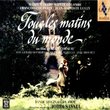| All Artists: Ludwig van Beethoven, Nikolaus Harnoncourt, Chamber Orchestra of Europe, Pierre-Laurent Aimard Title: Beethoven: Triple Concerto; Rondo in B flat; Choral Fantasy Members Wishing: 0 Total Copies: 0 Label: Warner Classics Release Date: 10/12/2004 Genre: Classical Styles: Opera & Classical Vocal, Chamber Music, Forms & Genres, Concertos, Historical Periods, Classical (c.1770-1830), Instruments, Keyboard, Strings Number of Discs: 1 SwapaCD Credits: 1 UPC: 825646060221 |
Search - Ludwig van Beethoven, Nikolaus Harnoncourt, Chamber Orchestra of Europe :: Beethoven: Triple Concerto; Rondo in B flat; Choral Fantasy
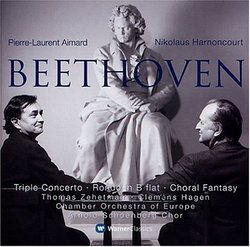 | Ludwig van Beethoven, Nikolaus Harnoncourt, Chamber Orchestra of Europe Beethoven: Triple Concerto; Rondo in B flat; Choral Fantasy Genre: Classical
Here's an inspired appendage to the Aimard-Harnoncourt set of the Beethoven Piano Concertos. When new, the Triple Concerto, combining three solo instruments with orchestra, was considered a bold new type of concerto. That'... more » |
Larger Image |
CD DetailsSynopsis
Amazon.com Here's an inspired appendage to the Aimard-Harnoncourt set of the Beethoven Piano Concertos. When new, the Triple Concerto, combining three solo instruments with orchestra, was considered a bold new type of concerto. That's how it's played here. The solo trio blends nicely with the orchestra, giving the work a chamber music dimension. Once past the slow introduction, Harnoncourt conducts a vigorous, almost rhapsodic performance, with great forward momentum. But the honors go to the outstanding soloists. Aimard etches the piano line with exceptional clarity, Hagen, the cellist of the Hagen Quartet, plays with gorgeous tone, while violinist Zehetmair, who also leads a quartet bearing his name, almost steals the show through his agile playing and phrasing that cuts to the heart of the music. I know of no better performance of this work. The Choral Fantasy too comes off as more than a weird combination of a solo piano fantasia and a choral sketch for the last movement of the Ninth Symphony. And pianist and orchestra play the daylights out of the quirky Rondo in B-flat major. --Dan Davis Similar CDs
Similarly Requested CDs
|
CD ReviewsBest Recording I've Heard of the Beethoven Triple Concerto John Kwok | New York, NY USA | 04/24/2005 (5 out of 5 stars) "I have to go back a while to recall a truly memorable performance of the Beethoven Triple Concerto I've either heard as a recording or live performance. The finest recording I've heard until now was an absolutely rhapsodic, vibrant interpretation with the Beaux Arts Trio and Bernard Haitink conducting the London Philharmonic. However, this new Warner Classics recording is quite simply the most daring, exciting performance of the Beethoven Triple Concerto I have heard with graceful, lyrical playing from pianist Pierre-Laurent Aimard, coupled with fiery performances from cellist Clemens Hagen and violinist Thomas Zehetmair, which revel in the then novelty offered by Beethoven's composition when it was introduced in the early 1800s. Nikolaus Harnoncourt leads the Chamber Orchestra of Europe in yet another spirited, dramatic performance of a Beethoven concerto without overwhelming the remarkable performances of these three splendid soloists. Without question, it is an excellent coda to the Aimard's Beethoven piano concerto cycle released earlier on Teldec, now Warner Classics. To their credit, both Aimard and the orchestra play the Rondo with ample gusto. Together, they offer yet another amazing performance in the Choral Fantasy, demonstrating that it too is a revolutionary work composed by Beethoven, and not merely, a rough sketch for his 9th Symphony's fourth movement. This splendid recording, blessed with exceptional sound quality, will please fans of Pierre-Laurent Aimard, Nikolaus Harnoncourt and the Chamber Orchestra of Europe. I strongly concur with The New York Times's assessment of this recording as among the finest classical music recordings of 2004." Best Recording and Star Performance of Mr. Harnoncourt Maria I. Martinez | Miami, USA | 01/28/2005 (5 out of 5 stars) "After you listen to this recording, you will understand why Harnoncourt is one of the few Maestros alive. Do not loose the opportunity to re-discover and enjoy the Choral Fantasy. Listen to the Piano (Mr. Aimard) and the "conversation" among Piano, Orchestra (COE), Soloist, Singers and Choir (Arnold Schoenberg). This is Beethoven and Harnoncourt in a great performance." An incredibly rich sonic banquet gotta_hava_dog | Colorado United States | 11/25/2005 (5 out of 5 stars) "This recording is fabulous. It's rich, deep and colorful. The piano itself sounds absolutely wonderful. Its clarity and voice are exceptional. Unlike some recordings that sound as if the performers are very pleased with themselves, the performers in this recording sound as though they are playing for the sheer joy of playing and for the sake of the music and not for themselves. It's very refreshing. I first heard this broadcast on our Public Radio Classical station. It was so distinct and unique that I came right to Amazon and bought it. It resonates in your chest, it's so rich. Really outstanding!"
|

 Track Listings (6) - Disc #1
Track Listings (6) - Disc #1
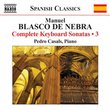
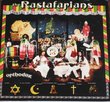
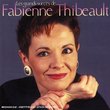



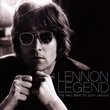



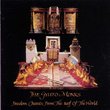
![Seussical [2000 Original Broadway Cast]](https://nationalbookswap.com/cd//m/02/4802/514802.jpg)

